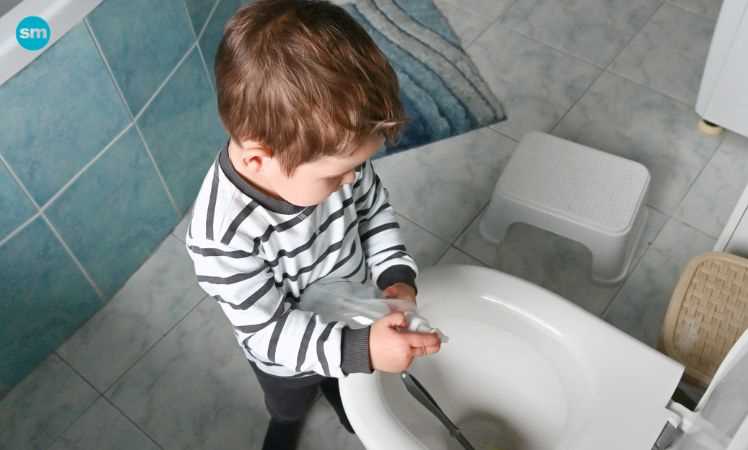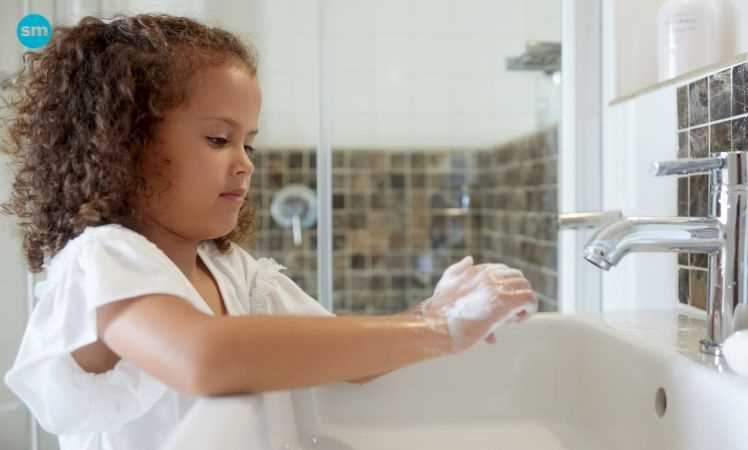Last updated on May 7, 2024 by Kathy
For a new mom or a person on her own, childproof plumbing can seem overwhelming. It has two aspects: keeping children safe and preventing damage to pipes caused by children. Children are almost fearless, sometimes clumsy, often careless, but always curious!
Moms don’t have eyes in the back of their heads or multiple arms, so it’s not too far-fetched for a child to turn on a faucet and get burned. Research shows that scalds, primarily from tap water in the shower, are the most common cause of burns in pediatric patients.
What a terrifying thought – second only to the possibility of almost drowning in the bathtub! During times like these, you need help with your home plumbing, and it’s even better if you know professional same-day service is always available.
If you are buying a home or considering renovating your home to ensure safety, there are many ways to protect your children and family.
1. Fix leaks and drips
Make sure there are no leaking pipes or dripping kitchen and bathroom faucets that need to be replaced because when those little feet move around, they could slip due to dripping water. As your children grow, teach them the dangers of playing with faucets, the importance of not overfilling the sink or tub, and the dangers of slipping on wet surfaces.
After wiping off excess water and turning off the water supply valve, call a plumber if you don’t have the tools or skills to fix the leak.
2. Maintain a standard distance between sockets and faucets or shower stalls.
Ensure a standard distance between electrical sockets and any faucets, showers or bidets to prevent serious accidents.
3. Keep the toilet lid down
Make sure you drain the tub completely after use and close the toilet seat, especially if you have young children.

4. Set the heater to a safe setting
Even if your child knows what cold and hot water are, follow the Consumer Product Safety Commission’s (CPSC) recommendations and lower the heater setting to 120°F (48.9°C). This should prevent accidental burns from any tub, sink or shower faucet. If your faucet has anti-scald devices, use them.
Young children should not be left unsupervised in the bathroom or kitchen. Never take high temperatures for granted, as not only can water cause damage, but fixtures can also become too hot to handle.
5. Rinse properly.
Make sure your children know what can be flushed and what should be thrown in the trash. Children may become obsessed with flushing and may throw away toys that cannot fit through narrow pipes. Flushing repeatedly will eventually cause water to overflow. A clogged pipe of this nature would not be a DIY project, so prevention is best!
6. Purchase plugs and filters.
Inexpensive items that can save you a lot of money are drain plugs and filters. They catch items that children might drop into the sink or tub, preventing potential clogs.
7. Create safe play areas.
When children are playing outside, make sure garden hoses and outside faucets are turned off and there are no leaky puddles where children could slip and fall. Store all buckets upside down to prevent accumulation of water, which could risk drowning.
8. Install floor drain
In areas where water may accumulate, such as a basement or laundry room, consider installing a floor drain. This prevents standing water, which is both a slip hazard and a potential breeding ground for mold.
9. Protect heavy equipment
Make sure heavy equipment connected to pipes, such as dishwashers or washing machines, is securely fastened to prevent them from tipping over if children try to climb on them.
10. Safety latches and locks
toilet lock
Curious toddlers will throw toys, papers, and other foreign objects into the toilet, which can cause clogs or even damage. Consider installing a toilet lock to keep the lid closed when not in use.
cabinet lock
Household cleaners and detergents are often stored under the sink. Install safety latches or locks on cabinets to ensure children do not have access to these toxic products.
Children learn through observation. Always demonstrate safe behavior around all plumbing fixtures so they understand the importance of caution and respect.
Final thoughts:
Childproofing your pipes may seem overwhelming at first, but with a little time and effort, you can create a safe environment for your children. Always stay up to date on the latest safety recommendations, adjust your home environment as your children grow and explore, and call a professional plumber who can get the job done right if it’s beyond your skill level.




